
In a previous blog I mentioned that I hadn’t drawn in my sketchbook in years. When I did I would often create something basketball related. I absolutely loved the sport. Drawing basketball players helped me learn anatomy, perspective, color, and action poses. I learned how to color my work with Adobe Illustrator while turning those sketches into finished renders. In that blog I also mentioned that I had turned down working with shoe, and apparel manufacturer AND 1. The company wanted to buy the rights to my current, and future basketball characters for a flat rate.
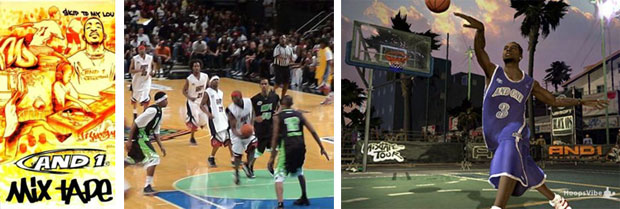
I would be getting no residuals on potential millions worth of revenue that the parent company would. In the early 2000’s there was no hotter place to work for. As an artist just getting started it was a dream opportunity, but I decided to hold onto my IP, and scruples instead. I learned that it was okay to turn down some clients after reading an interview with Michael Lau, one of my favorite artists. Mr. Lau helped start a movement. If you want to get the complete history of his early years please visit
the Michael Lau fan site which I recently restored. I mentioned a few of Michael’s contemporaries on my fan site, however I want to try to connect the dots, and explain how art, culture, and the toy market came together.
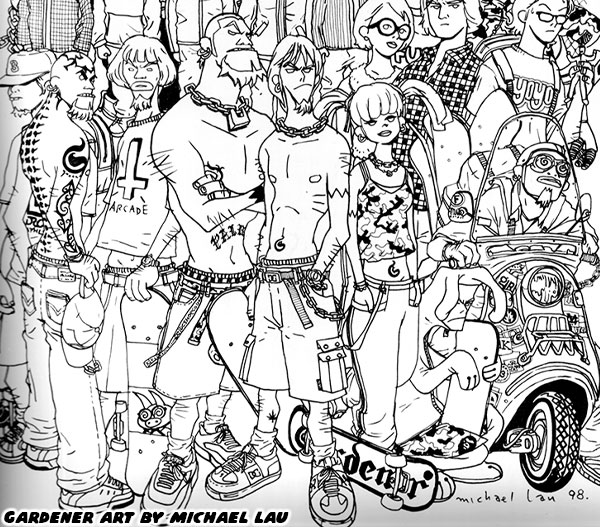
The art movement started in the early ’90s. Michael was from Hong Kong. He graduated from the Design First Institute, and went into ad art, and display design in the port city. In his free time he would make models, and toys. He sketched out a world of street kids that he called the “gardeners” the lowercase “g” was on purpose. In the mid-90’s he would create album covers for his friends in the Hip Hop, and rock groups Anodize (Jimmy Man, Gary Cheng, K.K. Wong, Was, and Davy Chan), Jan Lam, and the
Lazymuthafucka (MC Yan, DJ Tommy, Kit, Wah, Kee, Gary, Davy, Jimmy, Sam, Phat, Prodip, and Kevin) crews.
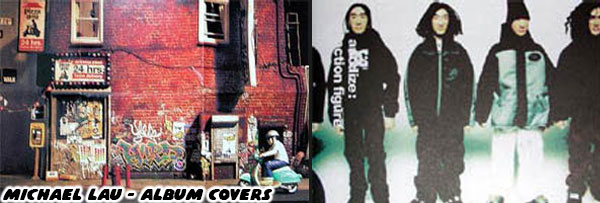
These album covers were very playful. They featured handmade figures in street, or city scenes. The Japanese group SMAP loved his work, and also commissioned him to create some album covers for them a few years later. Now I want you to remember that during this era the internet was still in its infancy as far as access went. Art, music, news, and culture spread much slower than today. Magazines were the only way for most people to see what the trends were.With that said it was still the street kids that were aware of what was happening around the world.
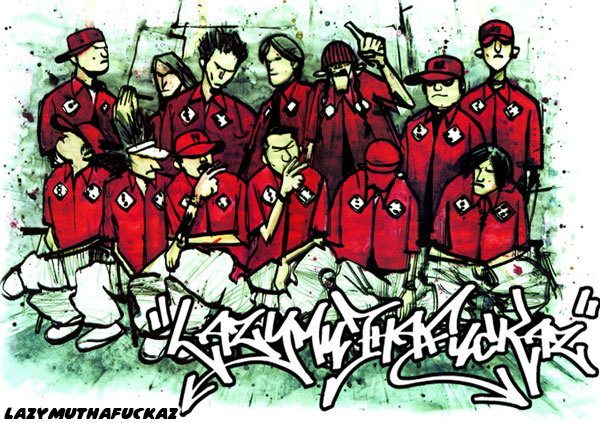
Whether in China, Japan, the UK, or the US pop music was, and would always be the catchy songs that were featured on the radio, tv, and movie screens. The rugged “urban” sound of rap would always be seen as the Black music from the USA, and not be as heavily promoted in most nations. This didn’t stop generations of kids from getting into Hip Hop culture. The kids in the favelas of Brazil, the kids in densely packed cities in Japan, and also the displaced Eastern European kids spread all over the world could hear that it was an entirely new movement, and they embraced it. They learned that Hip Hop was a culture made of multiple components.
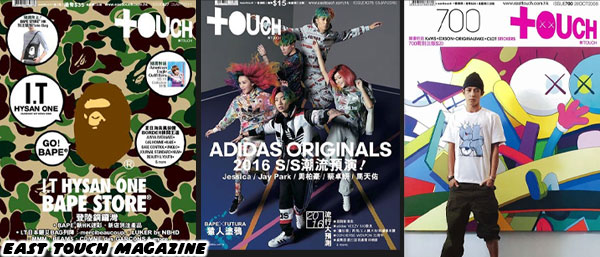
The four pillars were known as the deejay (the music/band), the emcee (the singer), graffiti (the art), and b-boy (the dance). Individually they were great creative outlets, but together they formed an entirely new culture. The fifth pillar of Hip Hop was called “Overstanding” instead of understanding by
Afrika Bambaataa, one of the architects of the movement. Mr. Bambaataa was a former gang leader, in the ‘70s he saw that the various tribes, or gangs in NYC were tearing each other apart. The police, and local governments were sewing division among the various ethnic groups, and he wanted to end the violence.
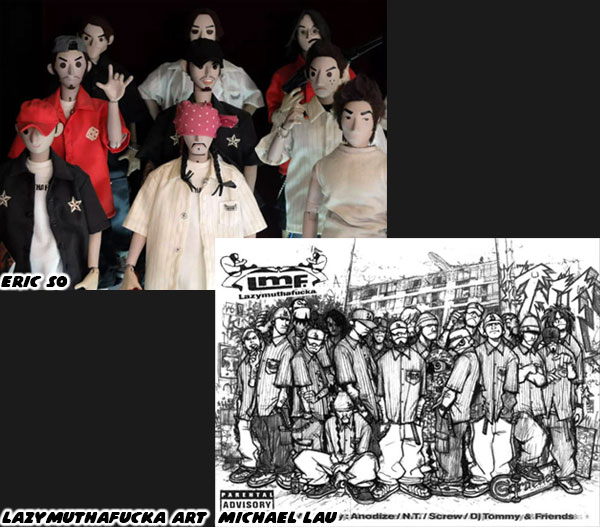
He knew that parties, music, and culture could bring them together. The boroughs of New York were forming a new sound. It wasn’t rock, it wasn’t soul, funk, or blues, but it pulled influences from each. With Black, Afro-Caribbean, and Latino roots it spoke to millions of people that didn’t hear themselves on the radio. They called the movement Hip Hop, reclaiming it from the insult that people would use to describe the music. The culture would tie together the different sounds, and stories of the city. More important, it was up to every person to share the story, and spread the culture. The movement borrowed a phrase from the days of American slavery “
each one teach one.” In Hong Kong, Japan, and elsewhere around the world the music, and art started taking off by the mid, and late ‘80s. Members were building their own crews, learning the dance, graffiti, rap, and turntable. They were telling the stories in their own native languages.
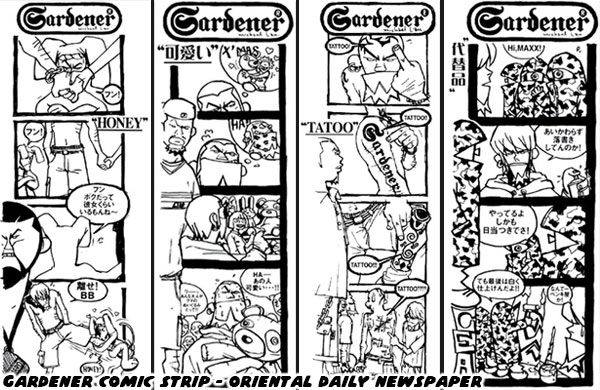
Michael Lau, his friends, and contemporaries were in the right place, at the right time. More important Michael was telling the story of the culture in his comics. He introduced the world to the gardeners in short panel comics in the Oriental Daily Newspaper, and larger color pieces in the pages of East Touch magazine. These comics mixed his illustrations, with his models. Each character had their own story, they lived in a world that young readers could relate to. He imagined they were growing up together, building families, moving on with their lives just as his friends were doing through the ‘90s.
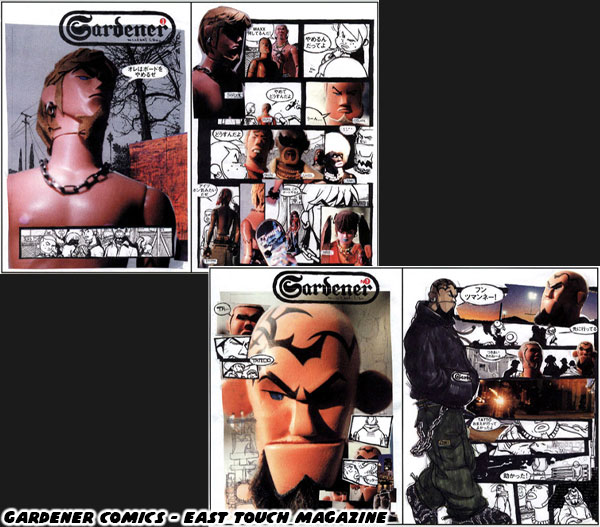
His friends convinced him to create a run of the figures for an upcoming indy art toy show. It all started with the hero of his comics, the young skater named Maxx. Sculpting, painting, and making the outfits was tedious work. Michael went to the trouble of making a custom box for the original toy show release. Green felt simulated grass was on the floor of the box. The boxes even featured hand-drawn labels, and a plastic numbered window. The figure included a skateboard, and a bag (for a change of clothes). Most figures even came with a sticker sheet or comic strip.
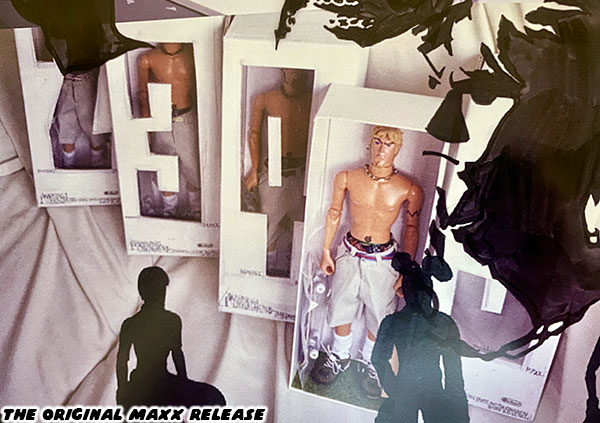
When Michael sold his Gardeners at toy shows and boutiques there were about 10 copies per character (Maxx, Miss, Brian, Tatto and Uncle) each in a numbered box. Every copy had a unique element, such as different clothes or shoes. He sold each figure for around $350 US, which would be a steal by today's custom figure rates. A few years ago one of the original figures popped up for sale at a gallery auction. It went for around $35,000. The figures went to close friends, and private collectors. The number on the boxes were also a play on "selling out" the Gardener figures. Michael had no intention of ever mass producing anything he worked on. As an artist he wanted to control his name, and the quality of his artwork. A poster print could be run in limited quantities, but it would be easily counterfeited. The figures were something much harder to recreate. Needless to say his toys were a hit. They were the talk of the toy fair. They sparked a fire that would see his friends, and contemporaries also try their hand at the art form. One of the earliest that wasn’t credited enough, even by me was
Eric So.
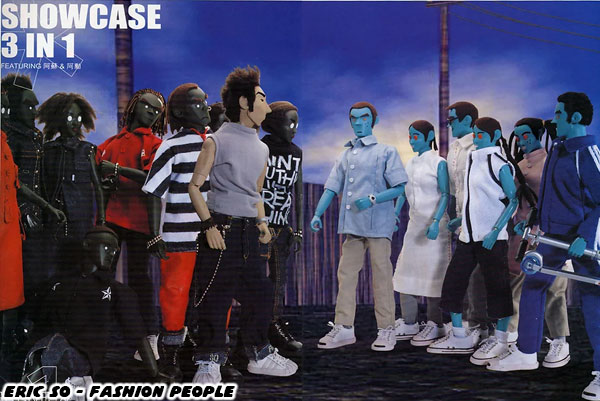
Mr. So ran in the same circle as Michael, he was friends with the LMF crew. He was also very familiar with Hip Hop culture. As an aside there were plenty of people in the USA that still conflated rap, and Hip Hop as the same thing. As the emcee KRS-One said “Rap is something you do, Hip-Hop is something you live. You are not doing Hip-Hop, you are living Hip-Hop.” This perception wasn’t limited to the USA. To the marginalized Gen-Xers in Japan, China, and Hong Kong rap, and rock was the music that spoke more to them than pop. They assimilated the culture, and made something entirely new out of it. I don’t think there could have been any other place that could have used Hip Hop culture, and start a figure movement with it. Think about the location for a moment. Fashion trends started in the major cities. Paris, London, New York, Los Angeles, Tokyo, etc. When a person thinks of the most avant-garde fashion in the world they might point to a place like Harajuku in Japan. The kids there took their tribal cultures seriously, and worked hard to create their niche.
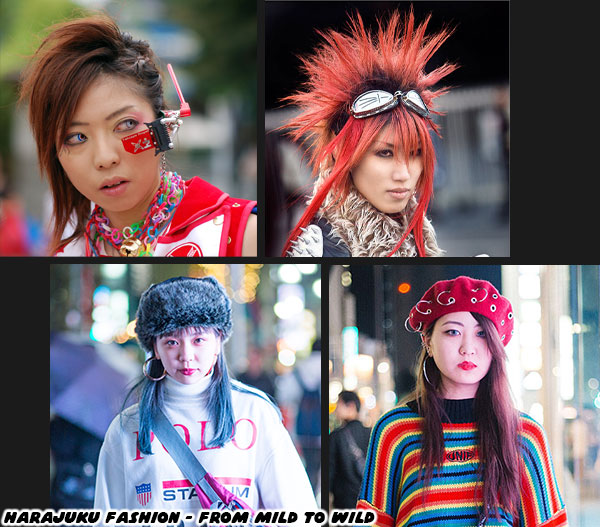
I would argue that the kids of Hong Kong in the ‘90s were some of the most underrepresented innovators in art, and fashion as well. Hong Kong as a nation was unique in that it had its finger on the pulse of global culture. They were colonized by the British, but situated in China. More than any other metropolis they imported, and exported the goods that the world demanded. They worked directly with the manufacturers of the biggest brands, often behind the scenes. These included high-end fashion labels.
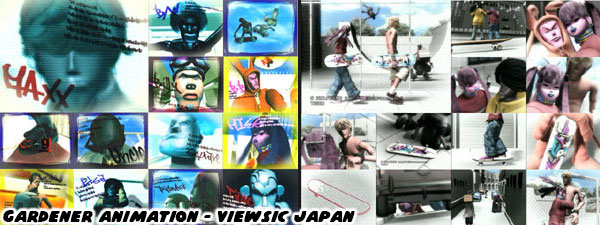
The trend setters in Hong Kong knew where street culture was moving to months before the rest of society caught up. Again, remember they were doing this before the internet. They were seeing the culture shift first hand, and making it their own. Michael Lau, Eric So, and their friends had a foot in the East, and the West at the same time. When they produced something it could be universally understood. They were laying the foundation for something brilliant. The world just didn’t know it yet. I would say that all of that changed when Michael went to Japan for his Neatnik exhibition in 1998. Japanese musicians were now eager to work with him on album art. He was now an artist getting international exposure.
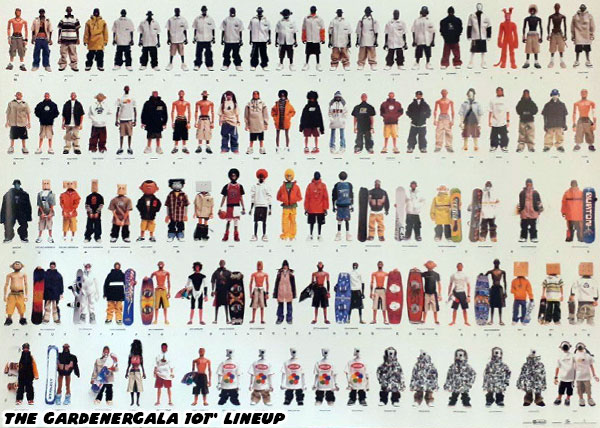
The following year there was the Michael Lau Exhibition III-crazysmiles at the Hong Kong-art center. This was the first show that featured all 101 of his original gardener figures. Fans of his comics could see all of the characters in person. Each figure was standing in a resin case, and you could walk around each of them, and absorb the countless details. In 2001 he took the exhibit to Japan, and that was essentially when the movement really took off. I remember that my mind was blown the very first time I saw a picture of the gardeners from that exhibition. It was entirely by accident, I was flipping through the pages of the Japanese skateboard magazine called Ollie. There was an insert from G-Shock watches by Casio. They were helping sponsor the gallery shows, and ran an ad on athletes, and artists to keep an eye on. Pictured were just a few of the gardeners but my mind was blown. I needed to find out everything I could about the characters, and the artist. I still have that magazine, and showed it to Lau a decade later.
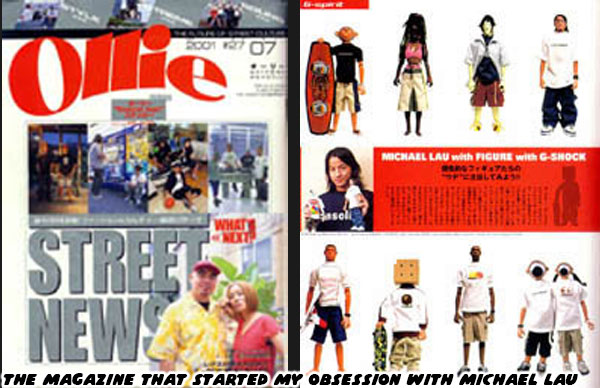
When it came to the birth of Hip Hop DJ Steinsky (
of Double Dee & Steinsky’s Lessons 1, 2 & 3 fame) once said “This is music that I’ve been waiting all my life to hear, and I didn’t even know it.” I got the same reaction when looking at the pictures of the gardeners. This was an art form that I’ve been waiting all my life to see, and I didn’t know it. Studying the work of Lau would shape me into a better artist, and connect me to the community in ways I could never have predicted. But I’ll talk about that more later. Were there ever works of art, or creators that completely changed the way you thought about art? Tell me about it in the comments section. As always if you would like to sponsor me
please visit my Patreon page and consider donating each month, even as little as $1 would help make better blogs and even podcasts!






























No comments:
Post a Comment